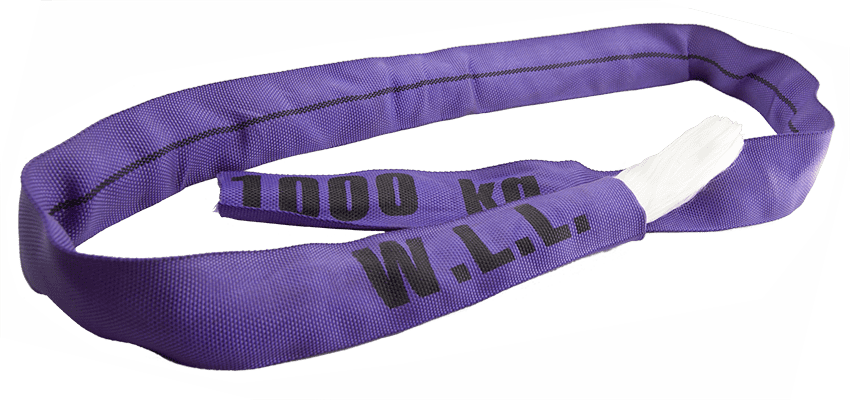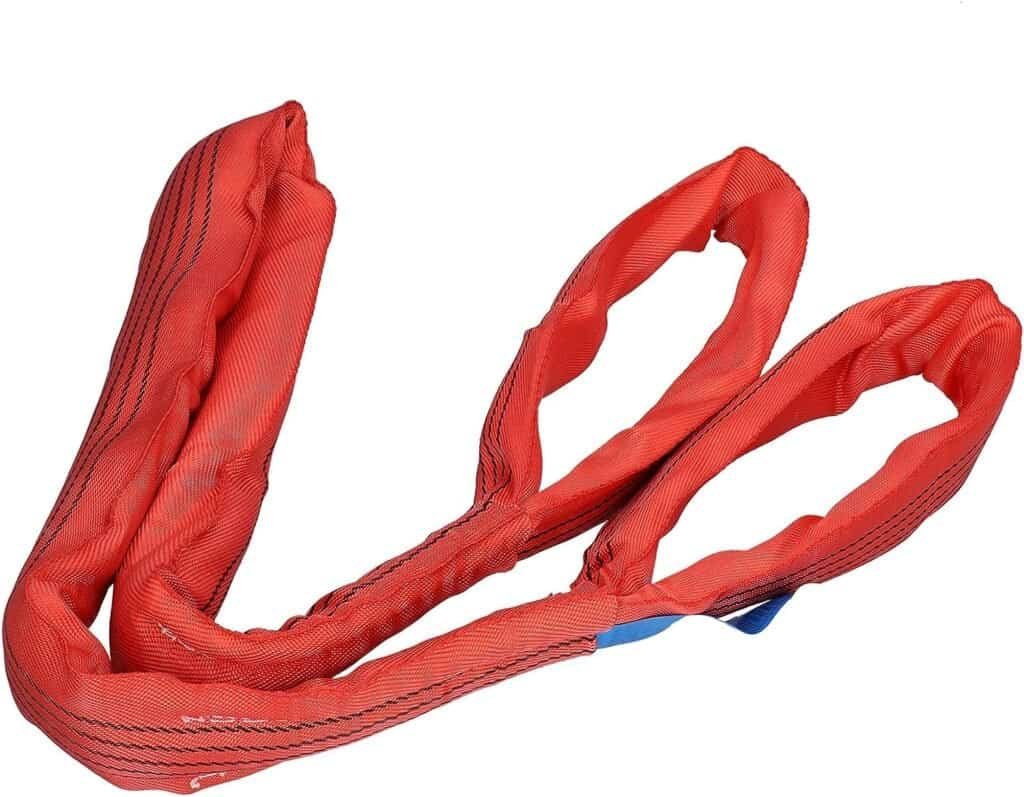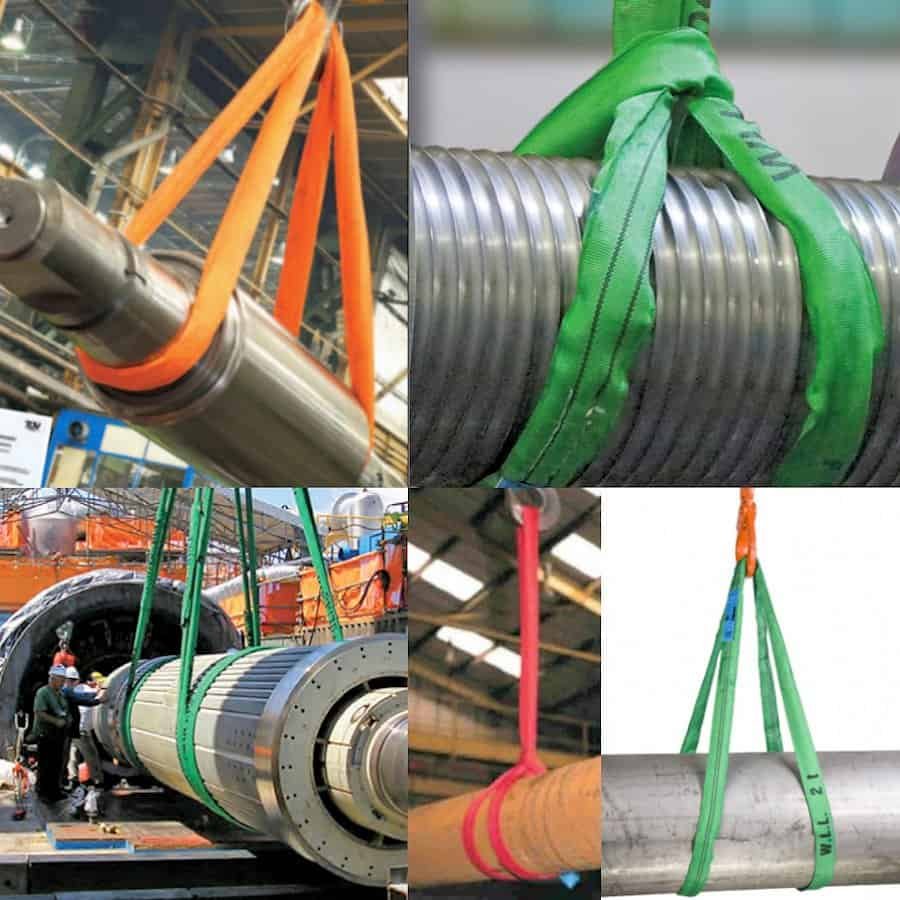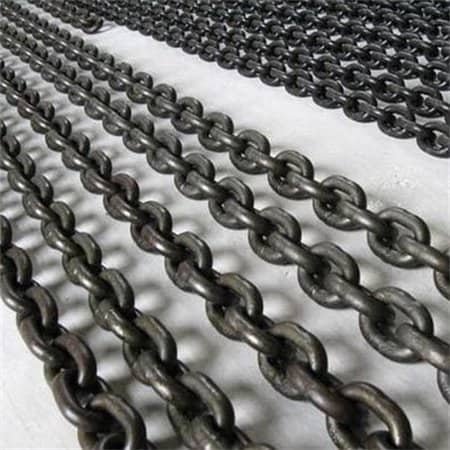Key Differences between endless round sling vs. round sling with loop
Endless Round Slings and Round Slings with Loop are two commonly used types. Though they both serve the same fundamental purpose—lifting, securing, and transporting heavy loads—they differ significantly in structure, application, and longevity.
Structure and Design
Endless Round Sling (Continuous Loop Design)

- Construction: Made from high-strength synthetic fibers (typically polyester) woven into a seamless, continuous circle with no termination points
- Key Feature: The entire sling body is uniformly constructed without any end loops or splices
- Advantages:
- Reversible design allows rotation during use to distribute wear evenly
- Adaptable to multiple rigging configurations (vertical, choker, basket hitches)
- Eliminates weak points at termination areas
- Limitations:
- Requires more skill to rig properly without predefined attachment points
- Not ideal for applications requiring fixed connection points
Round Sling with Loop (Eye-and-Eye Design)

- Construction: Features permanently spliced or stitched loops at both ends with reinforced terminations
- Key Feature: Pre-formed attachment points for quick connection to hardware
- Advantages:
- Simplified rigging with clearly defined connection points
- Reduced setup time for repetitive lifting tasks
- Preferred when precise length control is needed
- Limitations:
- Termination areas represent potential wear points
- Non-reversible design may lead to uneven wear patterns
- Generally has slightly lower working load limits compared to the endless version of the same material.
Load Handling Capacity (WLL)
The WLL can differ slightly based on the way the load is applied.
Endless Round Slings typically provide better load distribution because the load can be shared across the entire surface of the sling.
Round Slings with Loop can still handle heavy loads efficiently but may have slightly lower WLL when compared to endless slings, especially when the loop is subjected to concentrated wear or stress.
Application and Flexibility

| Feature | Endless Round Sling | Round Sling with Loop |
|---|---|---|
| Applications | Suitable for a variety of lifting operations, especially multi-purpose scenarios requiring different angles and positions. Ideal for irregularly shaped or fragile loads. | Suitable for applications with fixed lifting points, requiring quick attachment to hooks, shackles, etc. Especially ideal for structured and repetitive lifting operations. |
| Flexibility | More flexible; can be used in vertical, choker, and basket hitches. | Less flexible than an endless sling; mainly used for applications with fixed lifting points, limiting hitch options. |
| Lifting Positions | Can be rotated to extend lifespan and adapt to different lifting positions as needed. | Must connect through the loop ends, which limits the range of lifting methods. |
| Ideal Use Case | Best for operations that require frequent changes in lifting methods or positions. | Best for quick, reliable attachment to fixed lifting points, suitable for repetitive, high-frequency lifting. |
| Wear Resistance | Can be rotated to distribute wear evenly, increasing service life. | Loops are fixed contact points, so wear tends to concentrate at the ends, possibly requiring more frequent replacement. |
| Versatility in Configuration | Highly adaptable to various lifting configurations. | More limited configurations, suited for specific lifting needs, especially in fixed equipment setups. |
Maintenance and Inspection
Both types require regular maintenance and inspections to ensure their continued safety and performance.
- Endless Round Slings: Inspect for signs of wear, such as fraying, cuts, or damage from heavy use. Rotate the sling regularly to ensure even wear.
- Round Slings with Loop: Check both the body of the sling and the loops for any signs of damage or weakening. Pay particular attention to the loops, as they are more susceptible to fraying and wear.
Choosing Between the Two: Key Decision Factors
Opt for an Endless Round Sling when:
Your operations demand adaptable rigging solutions for diverse load types
You require a single sling to handle multiple hitch configurations (vertical, basket, choker)
Even wear distribution is critical for extended service life
You frequently handle irregularly shaped or delicate loads needing conforming support
Choose a Round Sling with Loop when:
Quick-connect functionality outweighs configuration flexibility
Your lifting operations involve standardized, repetitive tasks
Defined attachment points are necessary for safety or efficiency
Your crew benefits from simplified, mistake-proof rigging
Loads consistently require the same lifting configuration
Conclusion
Both Endless Round Slings and Round Slings with Loop offer unique benefits depending on your application. If you need versatility, durability, and flexibility in various lifting configurations, the endless round sling is the better choice. However, if you prioritize ease of use and quick attachment, especially in fixed lifting setups, the round sling with a loop would be ideal. Understanding your specific lifting needs will help you select the right type of round sling for your job.


